
All categories
Featured selections
Trade Assurance
Buyer Central
Help Center
Get the app
Become a supplier

(8303 products available)



























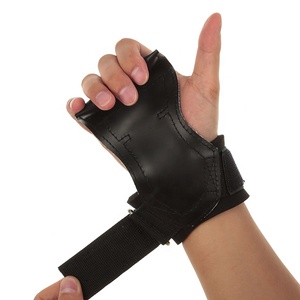
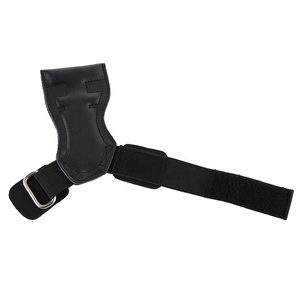
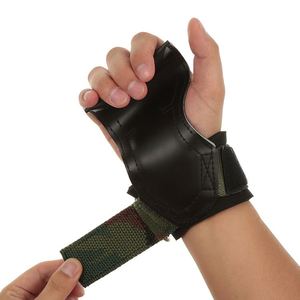
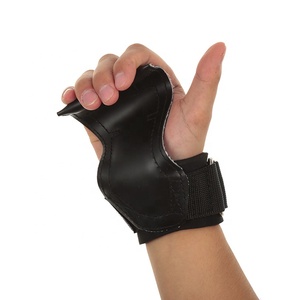
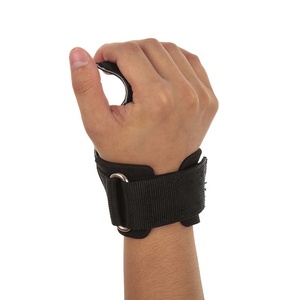
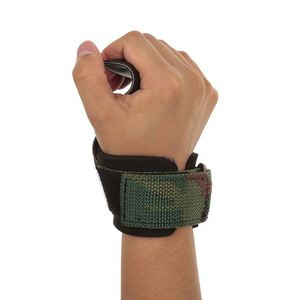













Fingerless lifting gloves are also referred to as weightlifting gloves. They are designed to provide a better grip and protection to the hands when performing weightlifting exercises. Here are the main types of lifting gloves:
Traditional Weightlifting Gloves
These are the most common type of lifting gloves. Usually, they are made from leather or synthetic materials. Also, they have padded palms to minimize the friction and discomfort caused by lifting weights. These gloves have an open-finger design that enhances grip and dexterity. Their primary use is for general weightlifting and gym activities.
Chalk-Compatible Gloves
These gloves are specifically designed to be used with chalk. Chalk is a substance used to enhance grip when lifting weights. Also, it minimizes moisture and improves friction. Ideally, this combination is very common among professional weightlifters and powerlifters. These gloves are made of durable materials like leather or synthetic fabrics. Additionally, they come with a special palm design to accommodate chalk application.
Cross-Training Gloves
These gloves are versatile and are used in different types of exercises. For instance, they are used in weightlifting, cycling, and obstacle course training. They are made from a combination of materials such as leather, synthetic fabrics, and neoprene. Also, they have a snug fit and provide flexibility and dexterity. Moreover, they are suitable for activities that require hand protection and a good grip.
Grip Strength Gloves
These gloves are designed to improve grip strength. They come with textured palms, which increase friction when lifting weights. Also, they decrease the chances of developing blisters and calluses. In addition, they are used in exercises that require a strong grip, such as deadlifts and pull-ups.
Hybrid Gloves
Hybrid gloves combine the features of traditional gloves with wrist support. Usually, they come with padded palms and a stiffer material for added support. Hybrid gloves are suitable for heavy lifting and exercises that need wrist stability.
Powerlifting Gloves
These gloves are specifically designed for powerlifting. They have reinforced palms that increase durability and support when performing heavy lifts. Also, they come with wrist wraps which provide additional support and stability. Further, they are suitable for bench presses, deadlifts and squats.
Fingerless lifting gloves are essential accessories that enhance performance and comfort in various fitness and lifting activities. Their applicability spans diverse scenarios, each benefiting from the unique design and functionality of these gloves.
Weightlifting
During weightlifting, particularly in exercises such as deadlifts, bench presses, and rows, fingerless lifting gloves with wrist support provide crucial grip support. They mitigate the strain on the palms and prevent the formation of calluses and blisters, allowing for more extended and intensive training sessions. Moreover, the gloves enhance stability and control, which is vital for safety and performance when lifting heavy weights.
CrossFit and High-Intensity Interval Training (HIIT)
CrossFit and HIIT workouts often incorporate varied and highly demanding exercises requiring equipment like kettlebells, barbells, and pull-up bars. Fingerless gloves offer the flexibility and dexterity necessary for these activities while providing essential grip and protection. The quick transitions between different exercises benefit from the secure hold that the gloves provide, reducing the risk of slippage and injury.
Bodyweight Exercises
For bodyweight exercises such as pull-ups, push-ups, and dips, weightlifting gloves fingerless cushion the hands and enhance grip, which is particularly beneficial for individuals struggling with slippery hands or those prone to discomfort during prolonged exercises. This additional support allows for improved performance and endurance when doing bodyweight exercises.
Gym Machine Workouts
Using gym machines, from lat pulldown machines to chest press machines, lifting gloves can improve grip on handles and bars, leading to more effective and comfortable workouts. They also prevent hand fatigue, allowing for more sets and repetitions, which is essential for achieving fitness goals.
Rehabilitation and Therapy
Fingerless lifting gloves are sometimes used in rehabilitation and therapy settings, where individuals are recovering strength and mobility in their hands and wrists. The support and compression provided by the gloves can aid in improving circulation, reducing swelling, and providing stability to the wrist and hand, facilitating a safer and more effective recovery process.
Selecting the right fingerless lifting gloves is essential for optimizing performance, ensuring comfort, and providing adequate support during weightlifting and fitness activities. Here are some key factors to consider when choosing these gloves:
Material and Durability: Choose gloves made from high-quality, durable materials like leather, synthetic leather, or robust fabrics. Leather gloves often provide excellent grip and longevity, while synthetic materials can offer better breathability and flexibility. Consider the nature of the workouts and the frequency of use when evaluating material durability.
Grip and Palm Padding: Look for gloves with sufficient palm padding to cushion the hands and reduce pressure on the palms during heavy lifting. The padding should be thick enough to provide support but not so thick that it impairs dexterity. Also, consider gloves with textured silicone or rubberized grip patterns to enhance grip on the barbell or other equipment.
Closure and Wrist Support: Check for gloves with adjustable wrist straps or closures to ensure a secure fit and provide additional wrist support. A snug fit is crucial for maintaining stability and preventing the gloves from slipping during intense workouts. Gloves with Velcro straps allow users to adjust the tightness according to their preferences.
Fit and Comfort: Choose gloves that fit snugly but comfortably, allowing for natural hand movement without being too tight. The fingers should fit comfortably in fingerless lifting gloves without excess material that could cause friction or irritation. Consider gloves with ergonomic designs or padding that conforms to the natural shape of the hand for added comfort during long workouts.
Breathability and Moisture-Wicking: Opt for gloves with breathable materials or ventilation holes to prevent hands from overheating and sweating excessively. Gloves with moisture-wicking properties can help keep hands dry and comfortable during intense workouts. This feature is particularly important for longer workout sessions to prevent discomfort and skin irritation.
Flexibility and Range of Motion: Choose gloves that allow for a full range of motion in the fingers and wrists. The gloves should not restrict movement or be overly stiff. Flexibility is especially important for exercises that require wrist and hand mobility, such as CrossFit or functional training.
Purpose and Specific Needs: Consider the primary purpose of the gloves and specific lifting needs. For instance, if planning to do heavy weightlifting, prioritize gloves with excellent grip and wrist support. For activities requiring more dexterity, like CrossFit, prioritize gloves with flexibility and a snug fit. Assess any specific requirements, such as allergy concerns or preferred closure types, when selecting gloves.
When buying lifting gloves, most buyers are concerned with their function, features, and design. Below are the answers to those concerns.
Fitness fingerless gloves are designed to provide a better grip when lifting weights. They protect the palms from developing calluses and blisters due to friction. These gloves improve the overall comfort of lifting heavy weights. They also enhance the lifter's performance by providing better control over the weights.
Materials
Most lifting gloves are made from durable and high-quality materials such as leather, neoprene, or synthetic fabrics. The materials provide the necessary grip and protection for the palm.
Padding
Padding on lifting gloves varies depending on the manufacturer. Some gloves have extra padding, while others have minimal padding. Extra palm padding is ideal for heavy lifting since it cushions the hand and reduces pressure. Conversely, minimal padding is suitable for activities that require more dexterity, such as gymnastic activities.
Closure
Most fingerless lifting gloves feature wrist closures, such as Velcro straps, to enhance security. Other gloves have elastic bands to ensure the gloves fit properly.
Breathability
Most gloves are made from breathable fabrics such as mesh or perforated leather to enhance comfort during workouts. The breathable fabric prevents the hands from sweating excessively, which can reduce grip.
Fingers
As the name suggests, fingerless lifting gloves have no fingers. They have open fingertips, which provides a better grip and more dexterity when lifting weights.
Palms
Palms of lifting gloves are often padded. The gloves may also feature palm grips or textured patterns to enhance grip when lifting weights.
Thumbs
To prevent slippage when lifting, the gloves are designed to secure the thumb. Some gloves have thumb loops for easy removal and wearing.
Q: Are fingerless lifting gloves necessary?
A: Well, whether or not these gloves are necessary depends on the opinion of the lifter. For instance, some lifters will argue that the calluses on their palms are a testament to their hard work in the gym, and they don't mind the friction and roughness that comes with lifting heavy weights. On the flip side, others will say that the gloves are a great way to protect their hands and offer a better grip when lifting. So, in a nutshell, while lifting gloves may not be an absolute necessity, they sure do come in handy.
Q: When should one consider changing their lifting gloves?
A: As a matter of fact, there are no recommended timelines for changing lifting gloves. However, if the gloves show signs of wear and tear, like frayed straps, ripped fabric, or diminished padding, it’s probably time to get a new pair. After all, using worn-out gloves can compromise their grip and protection, leading to potential hand injuries.
Q: What materials are lifters' favorite for their lifting gloves?
A: Material choice often depends on the preferences and priorities of the lifter. For example, leather is a popular choice because it is durable and provides a good grip. However, synthetic materials like neoprene or polyester are also widespread, especially for those who prefer more flexibility and breathability. At the end of the day, it's all about what works for the lifter.